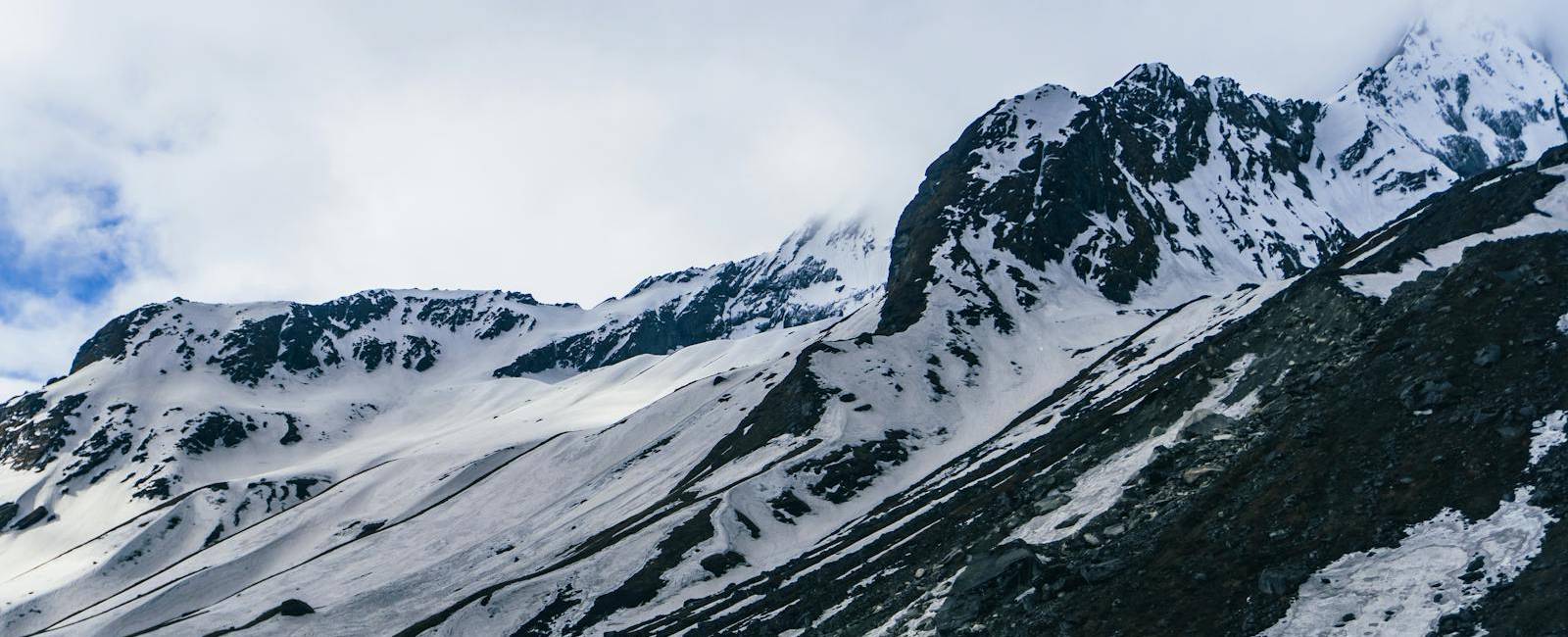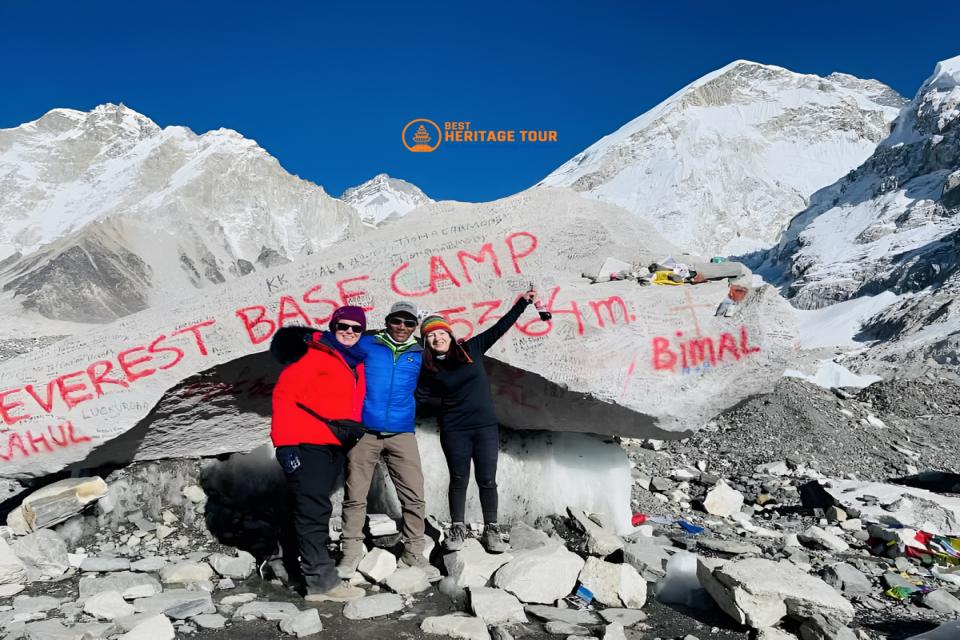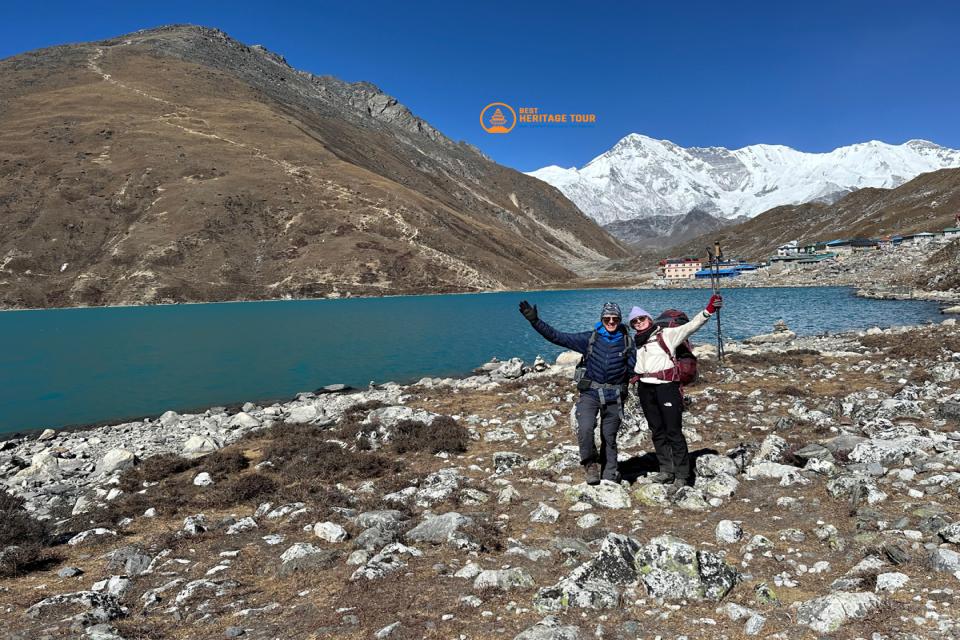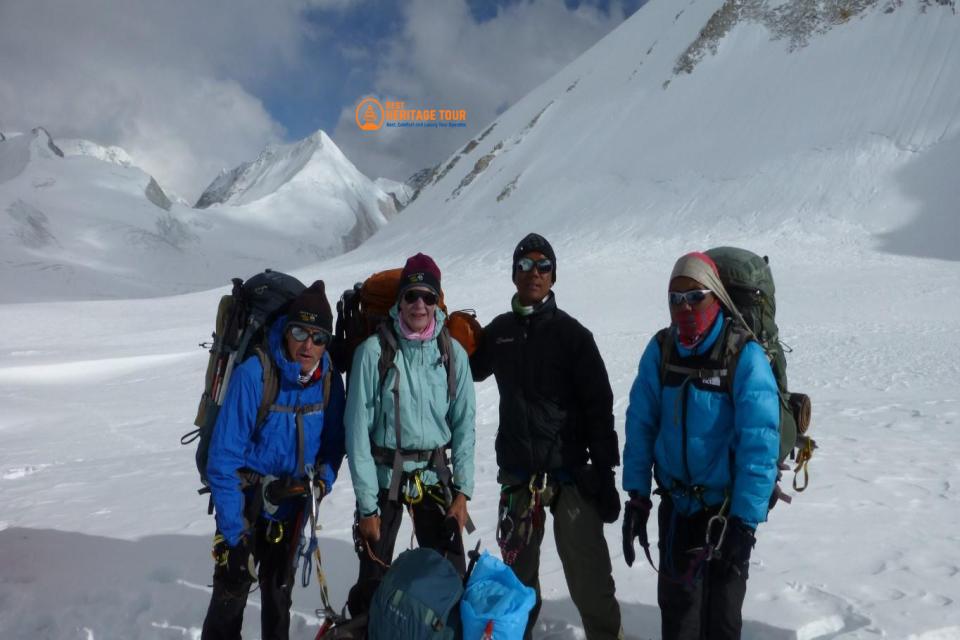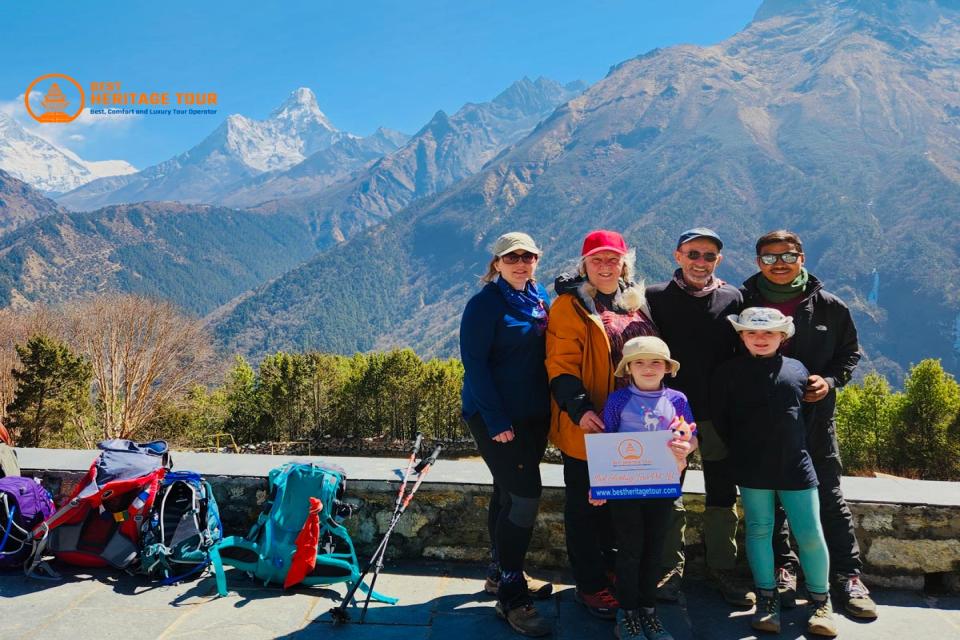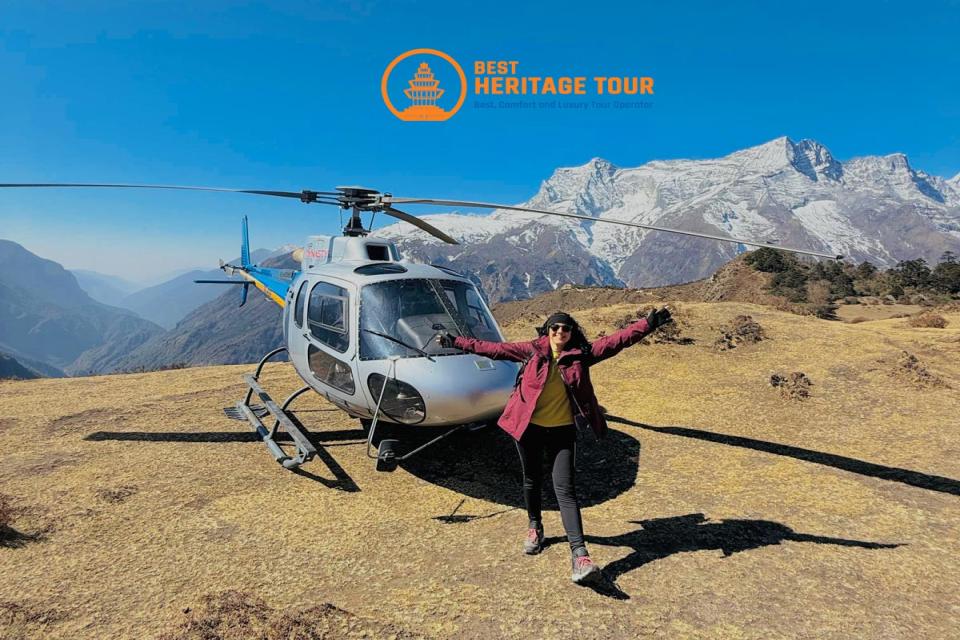The Everest Region, home to the majestic Mount Everest - the tallest peak on Earth - has long captivated trekkers and adventurers worldwide. Trekking in the Everest Region is not just a physical journey; it’s an immersion into ancient Sherpa culture, breathtaking mountain vistas, and unforgettable experiences that stay with you for life. As we step into 2025/26, the Everest Region continues to enchant with improved trekking infrastructure, sustainable tourism practices, and an array of trekking options suitable for every kind of traveler.
Whether you’re a first-timer dreaming of the classic Everest Base Camp Trek or a seasoned trekker craving the challenge of crossing multiple high passes, this guide will help you navigate your choices and prepare for an epic Himalayan adventure. Read on to explore the best treks, expert tips, and why booking your trip with Best Heritage Tour can make your Everest experience seamless and unforgettable.
Why Choose Trekking in the Everest Region?
The Everest Region is a trekking paradise for several compelling reasons. First and foremost, it offers unparalleled panoramic views of some of the world’s highest peaks, including Everest (8,848m), Lhotse, Nuptse, and Ama Dablam. Each step on the trail brings you closer to nature’s grandeur, from dense rhododendron forests at lower elevations to stark, rugged alpine landscapes above the tree line.
Beyond the natural beauty, the region is rich in Sherpa culture, a Himalayan ethnic group renowned for their mountaineering heritage. Along your trek, you’ll visit traditional villages like Namche Bazaar and Tengboche, where ancient monasteries stand as testaments to Buddhism’s deep roots in the region. Local hospitality shines through warm teahouse stays, cultural festivals, and meaningful encounters.
The Everest Region caters to diverse trekking preferences and fitness levels, offering short scenic hikes, classic multi-day treks, and high-altitude challenges. Additionally, trekking infrastructure has steadily improved, with better trails, safety measures, and communication facilities, making 2025/26 an excellent time to explore this iconic landscape.
The best trekking seasons are spring (March to May) and autumn (September to November), when the weather is stable, skies are clear, and rhododendrons bloom vibrantly. These windows provide ideal conditions to soak in the Himalayan splendor.
Top Treks in the Everest Region 2025/26
1. Everest Base Camp Trek - 12 Days
The Everest Base Camp (EBC) Trek is the quintessential Himalayan trek. This 12-day journey takes you from the lush lowlands of Lukla through bustling Sherpa villages and dense pine forests to the awe-inspiring base of Mount Everest itself. Along the way, you’ll pass through Namche Bazaar - known as the “gateway to Everest” where Sherpa culture thrives, and visit Tengboche Monastery, perched dramatically against a backdrop of towering peaks.
The highlight is undoubtedly the climb to Kala Patthar (5,545m), a viewpoint offering an unmatched panorama of Everest’s summit and its surrounding giants. The trek is moderately challenging, requiring good fitness and altitude acclimatization, but rewards you with a deeply fulfilling sense of achievement and breathtaking scenery.
2. Everest Base Camp Trek via Gokyo Lake - 15 Days
For those seeking a more varied and less crowded route, the Everest Base Camp Trek via Gokyo Lake adds spectacular turquoise glacial lakes and an adventurous high pass crossing. This 15-day trek includes the pristine Gokyo Lakes - an extraordinary cluster of emerald-blue lakes framed by towering peaks and the Cho La Pass (5,420m), a thrilling challenge that links the Gokyo valley with the traditional EBC trail.
Trekking via Gokyo lets you enjoy a quieter path, with the opportunity to explore unique landscapes and encounter fewer trekkers, perfect for those wanting both adventure and solitude.
3. Everest Three Pass Trek - 17 Days
The Everest Three Pass Trek is the ultimate expedition for experienced trekkers craving high-altitude thrills. This 17-day journey crosses three formidable passes: Renjo La, Cho La, and Kongma La - each above 5,300 meters. The route combines the highlights of both the classic EBC and Gokyo Lake treks, taking you through rugged glaciers, remote villages, and expansive mountain vistas.
This trek demands excellent fitness, strong acclimatization strategies, and mental toughness. In return, it offers a once-in-a-lifetime panorama and the rewarding challenge of conquering multiple high passes in one trek.
4. Everest View Trek - 5 Days
If your time is limited or you prefer a lighter adventure, the Everest View Trek is a perfect choice. Over five days, you can enjoy stunning vistas of Everest and other giants without the physical strain of reaching base camp. Starting from Lukla, this short trek leads to viewpoints like Namche Bazaar and offers an authentic glimpse of Sherpa culture and Himalayan scenery.
Ideal for beginners, families, and travelers seeking a taste of Everest’s magic, this trek provides comfort and accessibility while still delivering spectacular mountain views.
5. Everest Base Camp Trek with Helicopter Return - 3 Days
For travelers constrained by time but eager to experience the Everest Base Camp, the Everest Base Camp Trek with Helicopter Return combines trekking and scenic helicopter rides. This rapid itinerary involves trekking from Lukla to Everest Base Camp over two days, then flying back via helicopter, saving time and offering awe-inspiring aerial views of the Himalayas.
This option suits those who want to maximize their experience with minimal trekking days or who prefer a bit of luxury mixed with adventure.
How to Choose the Right Everest Trek for You
Picking the perfect Everest trek depends on several factors - your fitness level, the time you have, and what kind of experience you want. Here’s a simple way to match your preferences with the best trek:
For Beginners or Limited Time
-
Everest View Trek (5 Days): A gentle introduction to the Everest Region with stunning panoramas and rich Sherpa culture, ideal for first-timers and families.
-
Everest Base Camp Trek with Helicopter Return (3 Days): Perfect for those short on time who want to experience Everest Base Camp quickly without the full trek back.
For Intermediate Trekkers
-
Everest Base Camp Trek (12 Days): The classic trek that balances adventure with manageable challenges. Offers iconic views, cultural stops, and proper acclimatization.
-
Everest Base Camp Trek via Gokyo Lake (15 Days): Adds spectacular lakes and a high pass crossing for variety and fewer crowds.
For Experienced and Adventure Seekers
-
Everest Three Pass Trek (17 Days): A tough, high-altitude trek crossing three major passes. Best suited for fit, seasoned trekkers looking for a rewarding challenge.
Important Tips for a Safe and Enjoyable Trek in Everest Region
Acclimatization is Key
Altitude sickness is a common challenge in the Everest Region, affecting trekkers regardless of their fitness level. To stay safe and enjoy your trek, it’s crucial to give your body time to adjust to higher elevations.
Tips for Proper Acclimatization:
-
Ascend Slowly: Avoid rushing to higher altitudes. Take your time to let your body adapt.
-
Stay Hydrated: Drink plenty of water throughout the day to help your body cope with thinner air.
-
Rest Days: Plan rest days at key spots like Namche Bazaar and Dingboche to help acclimate.
-
Listen to Your Body: Watch for symptoms like headaches, dizziness, or nausea and don’t ignore them.
Proper acclimatization can prevent serious health issues and make your trek safer and more enjoyable.
When to Go: Best Seasons
The best time to trek in the Everest Region is during spring and autumn. These seasons offer clear skies, stable weather, and beautiful mountain views. Plus, you’ll get to experience local festivals and see blooming rhododendrons, adding a special touch to your trek.
Best Seasons for Everest Trekking:
-
Spring (March to May): Warm days, blooming flowers, and vibrant festivals.
-
Autumn (September to November): Cool, crisp air with the clearest mountain views.
Avoid trekking during the monsoon (June to August) because heavy rains can make trails slippery and block views. Winter (December to February) is very cold, with some high passes closed due to snow.
Permits and Guides: What You Need to Know
To trek in the Everest Region, you must have certain permits that protect both trekkers and the environment. These permits are mandatory for entry and help keep the region safe and preserved.
Essential Permits:
-
Sagarmatha National Park Permit: Required to enter the national park area.
-
TIMS Card (Trekkers’ Information Management System): Helps monitor trekkers for safety reasons.
Hiring a licensed guide is highly recommended and often mandatory. Guides not only help you navigate the trails safely but also share local stories and culture. Agencies like Best Heritage Tour handle all permits and logistics, so you can focus on enjoying your trek without any hassle.
Pack Smart for the Mountains
The Everest Region’s weather can change quickly - from warm sunny days to freezing nights. To stay comfortable, it’s important to pack clothes you can layer.
Essentials to Pack:
-
Base Layers: Lightweight, moisture-wicking shirts and thermal underwear to keep you dry and warm.
-
Mid Layers: Fleece jackets or down sweaters for insulation.
-
Outer Layers: Waterproof and windproof jackets and pants to protect against rain and snow.
-
Footwear: Sturdy, well-broken-in trekking boots with good ankle support.
-
Accessories: Warm hats, gloves, sunglasses, and sunscreen to protect against the strong mountain sun.
-
Sleeping Gear: A good-quality sleeping bag rated for cold temperatures.
Packing smart helps you stay comfortable throughout the trek and be prepared for sudden weather changes.
Respect Nature and Support Local Communities
The Everest Region is an incredibly fragile environment. As trekkers, we have a responsibility to protect this natural beauty and support the people who call it home.
Ways to Trek Responsibly:
-
Carry Out Your Trash: Never leave garbage behind on the trails. Pack out everything you bring in.
-
Avoid Plastic Bottles: Use refillable water bottles to reduce plastic waste.
-
Support Local Economy: Buy handicrafts, stay in local teahouses, and hire local guides and porters.
-
Respect Wildlife and Plants: Keep a safe distance and avoid disturbing animals or picking plants.
By trekking responsibly, you help preserve the region for future generations and contribute positively to local communities.
Why Book Your Everest Trek with Best Heritage Tour?
Booking with Best Heritage Tour means you get a hassle-free, expertly managed trek tailored to your needs. Their packages include:
-
All necessary permits and paperwork handled for you.
-
Comfortable teahouse accommodations along the way.
-
Experienced guides and porters for safety and local insight.
-
Flexible itineraries for every fitness level and trekking style.
-
Reliable transportation and full logistical support.
They understand the Everest Region intimately and are committed to making your 2025/26 trek memorable, safe, and culturally enriching.
Conclusion
Trekking in the Everest Region remains an unforgettable adventure in 2025/26, whether you choose the classic Everest Base Camp trek, a high-altitude challenge like the Three Pass Trek, or a shorter scenic journey. With breathtaking mountain views, warm Sherpa hospitality, and an invigorating Himalayan atmosphere, this region offers something truly special for every traveler.
Are you ready to start your Everest adventure? Connect with Best Heritage Tour today to plan your perfect trek with trusted local experts by your side.
Contact Best Heritage Tour now and embark on your Himalayan journey
Phone/Whatsapp/Viber: +977-9851149197
Website: www.bestheritagetour.com
Email: info@bestheritagetour.com / bestheritagetour@gmail.com
Office: Thamel Marg, Kathmandu, Nepal
Your unforgettable Everest adventure awaits - take the first step today and let the mountains change your life forever.
Author: Best Heritage Tour
Date: 28th July, 2025

